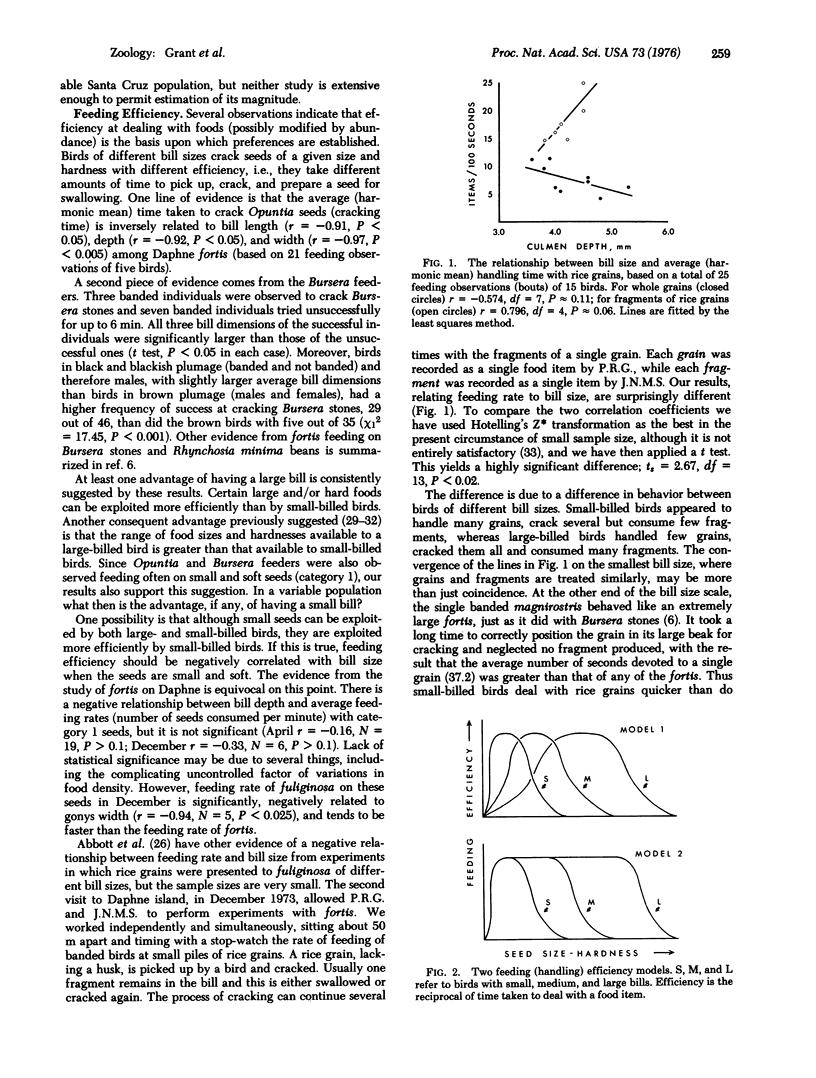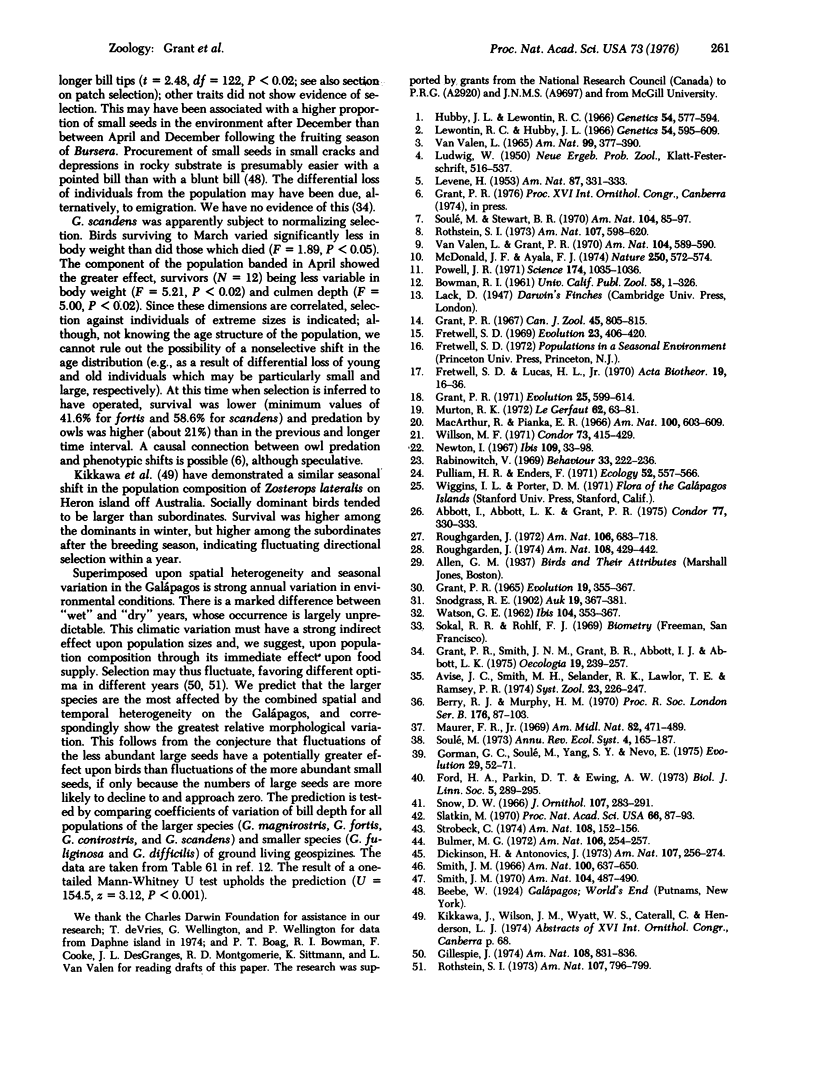Abstract
Van Valen's model, which relates morphological variation to ecological variation in an adaptive scheme, was investigated with individually marked and measured Darwin's finches on two adjacent Galápagos islands, Santa Cruz and Daphne Major. Results show that environmental heterogeneity is correlated with large continuous, morphological variation: variation in bill dimensions of Geospiza fortis is greater on Santa Cruz than on Daphne, as is environmental heterogeneity. Within populations of this species, different phenotypes distribute themselves in different habitat patches, select foods of different sizes and hardness, and exploit them with efficiencies that are phenotype- (bill size) dependent. These data constitute indirect evidence that natural selection has a controlling influence over the level of phenotypic variation exhibited by a population. Further evidence is that phenotypes did not survive equally well during the study period; on Daphne island G. fortis was apparently subjected to directional selection on bill tip length and G. scandens to normalizing selection on body weight and bill depth. Other factors which may have contributed to the establishment of a difference in variation between Santa Cruz and Daphne populations are the founder effect, genetic drift, and assortative mating. Annual climatic unpredictability is considered a source of environmental heterogeneity which, through its effect upon food supply, favors large morphological variation. It is predicted that species of large individual size are more influenced by this than are small species, and consequently exhibit greater size-corrected variation. The prediction is tested with data from six Geospiza species, and found to be correct.
Full text
PDF




Selected References
These references are in PubMed. This may not be the complete list of references from this article.
- Hubby J. L., Lewontin R. C. A molecular approach to the study of genic heterozygosity in natural populations. I. The number of alleles at different loci in Drosophila pseudoobscura. Genetics. 1966 Aug;54(2):577–594. doi: 10.1093/genetics/54.2.577. [DOI] [PMC free article] [PubMed] [Google Scholar]
- Lewontin R. C., Hubby J. L. A molecular approach to the study of genic heterozygosity in natural populations. II. Amount of variation and degree of heterozygosity in natural populations of Drosophila pseudoobscura. Genetics. 1966 Aug;54(2):595–609. doi: 10.1093/genetics/54.2.595. [DOI] [PMC free article] [PubMed] [Google Scholar]
- McDonald J. F., Ayala F. J. Genetic response to environmental heterogeneity. Nature. 1974 Aug 16;250(467):572–574. doi: 10.1038/250572a0. [DOI] [PubMed] [Google Scholar]
- Powell J. R. Genetic polymorphisms in varied environments. Science. 1971 Dec 3;174(4013):1035–1036. doi: 10.1126/science.174.4013.1035. [DOI] [PubMed] [Google Scholar]
- Slatkin M. Selection and polygenic characters. Proc Natl Acad Sci U S A. 1970 May;66(1):87–93. doi: 10.1073/pnas.66.1.87. [DOI] [PMC free article] [PubMed] [Google Scholar]


